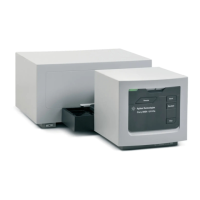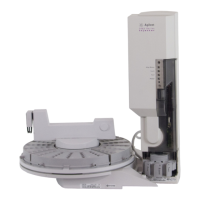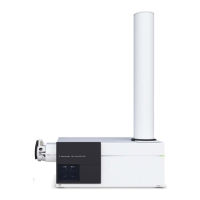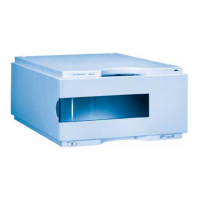5Methods
106 Operation Manual
You cannot change the data rate during a run.
You will see higher relative noise at the faster sampling rates. Doubling the data rate can
double peak height while the relative noise increases by 40%. Although noise increases, the
signal-to-noise ratio is better at the faster rates.
This benefit only occurs if the original rate was too low, leading to peak broadening and
reduced resolution. We suggest that rates be chosen so that the product of data rate and peak
width in seconds is about 10 to 20.
The figure shows the relationship between relative noise and data rates. Noise decreases as
the data rate decreases until you get to data rates of around 5 Hz. As the sampling rate slows,
other factors such as thermal noise increase noise levels.
Table 13 Agilent data system data processing
Data rate, Hz Minimum peak
width, minutes
Relative
noise
Detector Column type
1000 0.0002 6.96 FID/NPD Narrow-bore,
0.05 mm
500 0.0004 5 FID/NPD Narrow-bore,
0.05 mm
200 0.001 3.1 FID/FPD+/NPD Narrow-bore,
0.05 mm
100 0.002 2.2 FID/FPD+/NPD Capillary
50 0.004 1.6 ECD/FID/FPD+/NPD
20 0.01 1 ECD/FID/FPD+/NPD
10 0.02 0.7 ECD/FID/FPD+/NPD
5 0.04 0.5 ECD/FID/FPD+/NPD
/TCD
to
20.1 0.3ECD
1 0.2 0.22 ECD
0.5 0.4 0.16 ECD
0.2 1.0 0.10 ECD
0.1 2.0 0.07 ECD Slow packed
